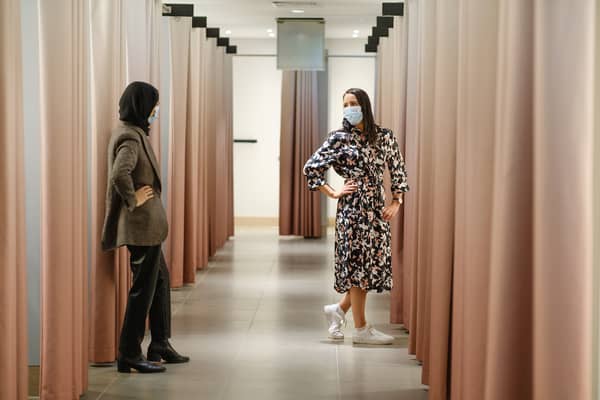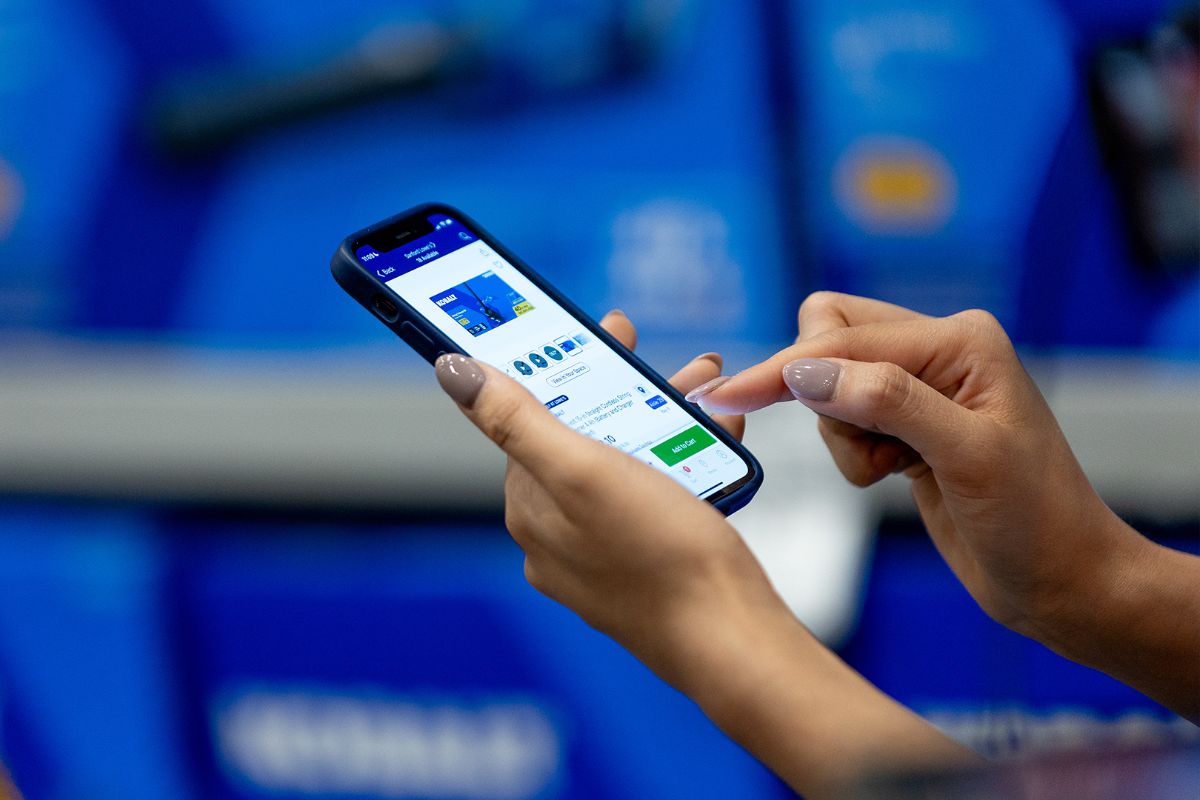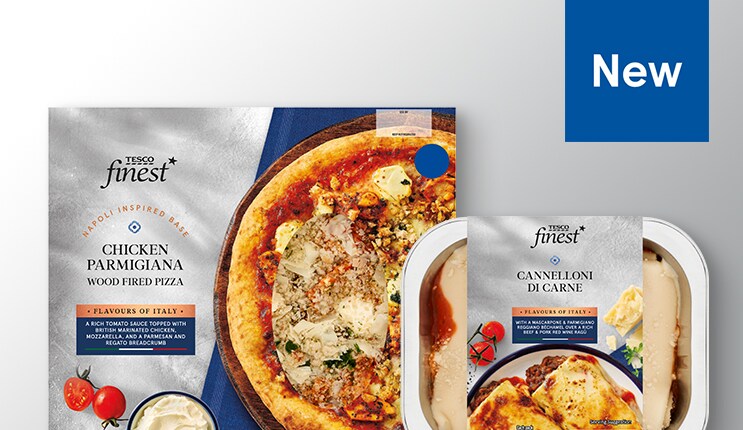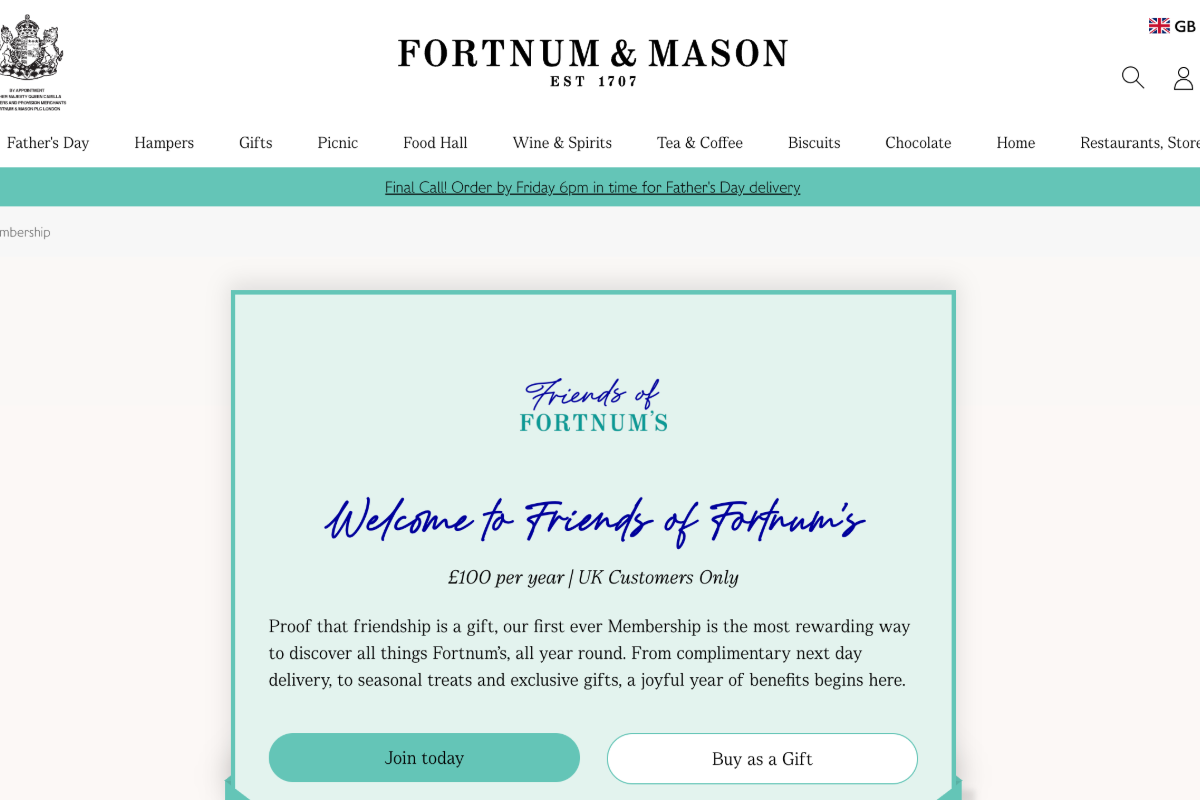Almost three-quarters (74%) of John Lewis sales took place online in the first half of its financial year – up from 40% before the Covid-19 pandemic. Almost a quarter (24%) of its online sales are now via its app, and it is to trial video-on-demand shopping.
The fast shift online came as the department store’s overall sales grew by 12% in the first half of last year, compared to the same time last year, and by 13% on a like-for-like (LFL) basis that strips out the effect of store openings and closures. Sales were 1% ahead on the same period in pre-pandemic 2019, and by 11% LFL – as the retailer makes slightly more sales from eight fewer stores than it had in 2019.
While there’s been a significantly shift towards buying online, John Lewis Partnership chairman Sharon White says that shoppers are now coming back into John Lewis’ shops to buy larger items of furniture and beds, but that footfall is still lower than before the pandemic. LFL sales were around 20% lower than two years ago for the part of the half-year in which John Lewis shops were open. City centre shops, says White, have been “harder hit” than those on retail parks or standalone stores. Shoppers can now buy or collect from John Lewis and Waitrose from 1,026 “touchpoints” – including 34 John Lewis shops and 327 Waitrose supermarkets. In January 2020, John Lewis had 51 shops, Waitrose 328 and in total shoppers could buy or collect from 447 locations.
The update came as John Lewis and Waitrose parent company the John Lewis Partnership today reported revenue of £5.2bn in the six months to July 31. That’s 5% up on the same time last year and 8% up on the same time two years ago, in 2019. Top-line pre-tax profits came in at £69m before one-off costs, representing a £125m improvement from a loss of £55m at the same time last year, and a £121m improvement from a loss of £52m at the same time in 2019. But one-off costs of £98m – mostly related to restructuring and redundancy from the closure of eight shops and the proposed closer of its Uckfield customer delivery hub – meant that at the bottom line it reported a pre-tax loss of £29m. That’s a recovery from the pre-tax loss of £635m reported last time, but it’s behind the bottom line pre-tax profit of £192m, reported in 2019.
White says: “We have begun the financial year with profits recovering, ahead of both last year and expectations set at our year end results.Traditionally, our profits are skewed to the second half of the year because of the importance of Christmas, especially in John Lewis.As we look ahead, there is significant uncertainty. Like the whole of retail, we are managing global supply chain challenges and labour shortages.We are seeing inflationary pressures, which we expect to persist.
“We are taking a raft of measures to mitigate these risks and deliver Christmas for our customers.These include a successful campaign to recruit drivers, offering competitive salaries and benefits, recruiting 7,000 temporary seasonal roles and booking additional freight to make sure John Lewis Christmas products arrive on time.
“Given the back ended nature of our trading year, we do not generally provide an outlook.And this year we face additional uncertainty. Even with the success of the vaccination programme the course of the pandemic this winter is hard to call.”
Waitrose
Some 17% of Waitrose sales are now online – up from 11% last time following a year of fast ecommerce growth. At the height of lockdown, 20% of sales were online, while before the pandemic only 5% were. Overall sales are 2% up on last year, and 10% on 2019. Ecommerce growth has come as Waitrose expanded its delivery fleet and capacity, opening a new fulfilment centre at Greenford, West London and working with Deliveroo in a partnership that is now generating sales of almost £1m a week, delivering from 150 shops – and attracting younger shoppers. More than a quarter (28%) of Waitrose online sales are now made via its app – up from 15% last time.
Waitrose and John Lewis are to work more closely together, with all general merchandise that Waitrose sells to be sourced by John Lewis ahead of this Christmas. Seventeen Waitrose shops now have a dedicated John Lewis space – a number that is set to rise to 40 by the end of the year.
Waitrose is also ending the sale of 10p bags for life and will deliver all online grocery deliveries without bags.
Investment in transformation
The retail group is investing up to £800m this year in a digital-led transformation, and spent £334m of that in the first half. As yet, says John Lewis Partnership, “there remains uncertainty about where the balance of trade between online and physical retail will normalise. However, the marked shifts we have seen since 2019/20 are highly unlikely to reverse to pre-pandemic levels.
“Consequently we are investing significantly in both our digital proposition and capacity growth to support customers as they evolve their shopping behaviour.”
At John Lewis that means investing in capacity, including a new 1m sq ft warehouse close to its Magna Park, Milton Keynes site, in a move that will create more than 500 jobs. The retailer has also taken a short term lease in Leicestershire, ahead of this year’s peak trading period.
Waitrose has added online capacity within 24 shops, and says that will rise to 45 in the second half of the year. It also opened a new customer fulfilment centre in Greenford, West London, and as a result will have capacity for more than 300,000 grocery orders a week, up from 130,000 a year ago.
The partnership has also spent £40m in the first half on improving the customer experience on both Waitrose and John Lewis websites. John Lewis is trialling a fit finder, and is to trial video-on-demand shopping, so that shoppers can engage and shop with live content. It has invested to improve its search and navigation, and in richer content. Waitrose has invested in search, an easier checkout, and online delivery tracking as well as boosting online delivery slots.
John Lewis and Waitrose are both Leading retailers in RXUK Top500 research.









